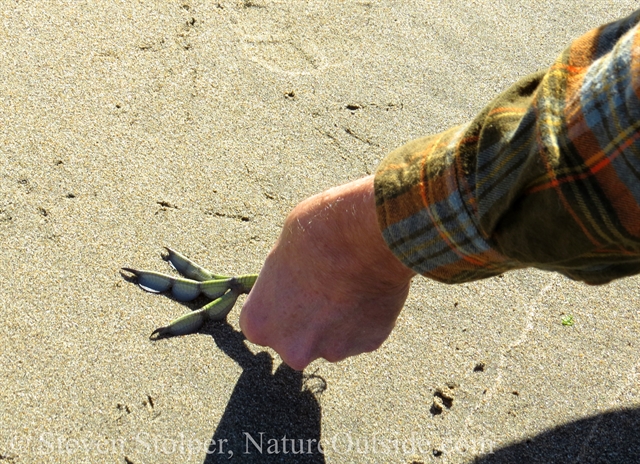
If you spend time in nature, she rewards you with magical experiences. But sometimes, the experiences are just plain weird!
WARNING: This article contains a picture of a dead animal.
Something’s Afoot
I was out with the Bay Area Trackers, prowling the banks of a lagoon where coastal marsh shifts to sandy beach. It’s a great place to find tracks. A variety of animals inhabit this freshwater environment. And the sand gives amazing prints. I’ve learned more about tracking at this one spot than anywhere else on the planet.
We surround a line of fox tracks running down the side of a sand dune. Or, are they bobcat? A debate ensues, with elder trackers encouraging the beginners to ask and answer their own questions. Everyone is engrossed in the tracks.
I look up, sensing a disturbance. Overhead a drama is playing out. A raven zooms across the lagoon carrying something in its beak. My first thought is that it has a stick. But a second raven flies in hot pursuit. The pursuer caws “Cr-r-ruck! Cr-r-ruck! Cr-r-ruck!” as they weave first left and then right. From the ferocity of the chase, that first raven must have food.
The lead raven describes a full 360 before settling on a log washed onto the shallow beach. The pursuer alights on the sand a little way off, watching intently. Whatever the stick-like thing is, it must be a juicy morsel.
When we finish looking at the fox tracks (or are they bobcat?), the group heads over to the log to see if we can learn what the excitement is about. On the way, one of the other trackers shows me a photograph of the chase. It shows the two ravens with a red-tailed hawk in full pursuit! Could they have made off with its meal?
The American Coot Foot
We reach the log where the raven perched. And just below it we find the foot of an American coot (Fulica americana)!
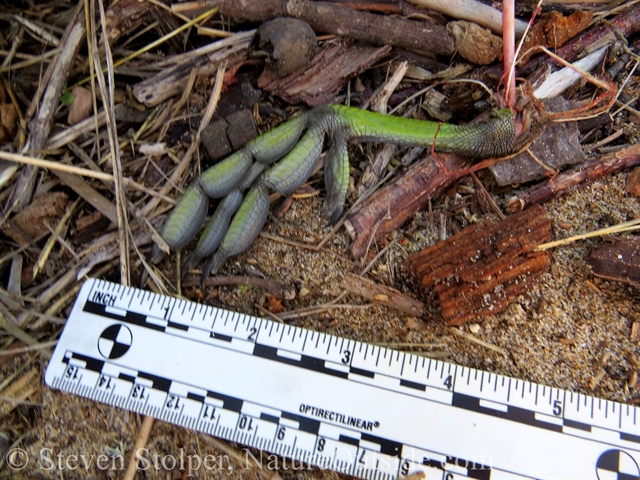
It’s the unmistakable foot of an American Coot
I’ve written about coots and their mysterious secret. They look like ducks, but they’re not! Coots are members of the Rallidae family, more closely related to the cranes and rails that prowl the shoreline. Coots are about the size of a chicken. Their charcoal feathers and bright white beak are distinctive even when viewed from afar.
They eat aquatic plants including algae, duckweed, eelgrass, sedges, waterlilies, and cattail. Like ducks they pluck at plants and dabble. But they also dive to the bottom, disappearing in an instant and resurfacing with tendrils of green dangling from their mouths.
Although coots swim like ducks, they don’t have webbed feet. Each of the coot’s toes has large flaps of skin that act like flippers. They fold back whenever the coot raises its leg so they don’t trip the bird while it’s walking.
That’s why this is an amazing find. It’s a chance to examine one of their magnificent feet!
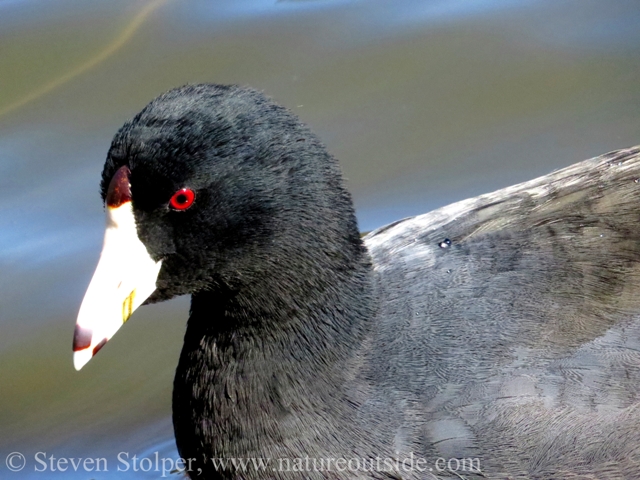
American Coot
Take a look at the flaps and the surprisingly long claws.
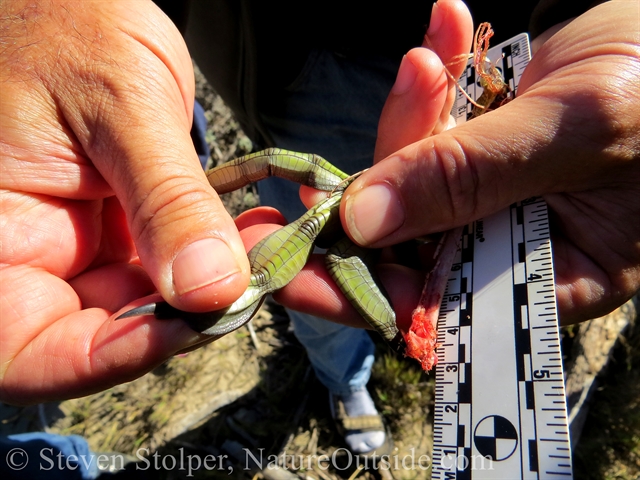
Coots have distinctive feet. The length of the claws surprised me.
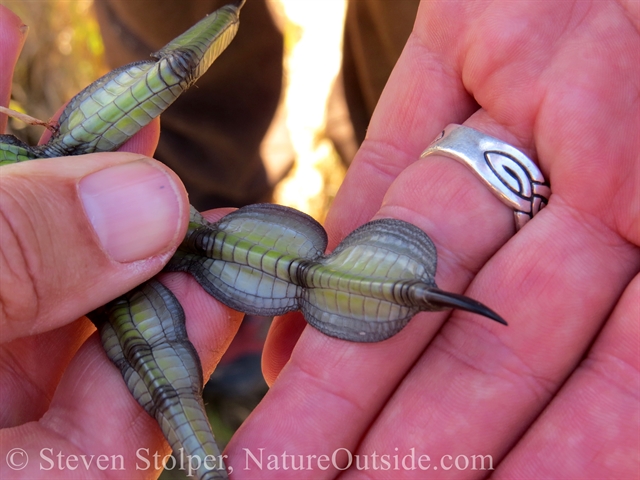
The flaps help them swim. They fold when walking on land.
Earlier, we had seen coot tracks on the beach. I noticed that each track had a rounded “heel,” like the imprint from the heel of a human hand. And the claw from the center toe appeared to drag in the sand as it walked.
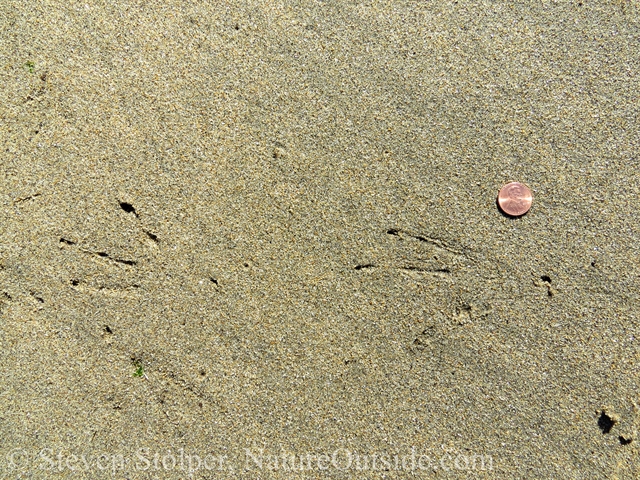
American coot tracks with penny for scale. Notice the “drag” behind the right-hand track.
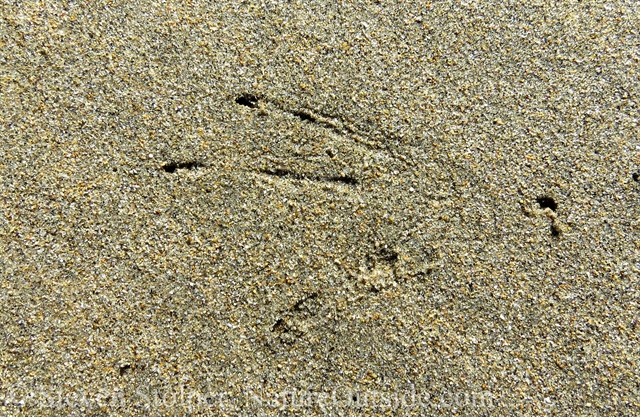
Notice the rounded “heel.” It almost looks like the heel pad of a mammal.
Could we reproduce these tracks using the bird’s foot? The sand was much harder than when the tracks were made. But we used the foot to make imprints in the sand. Sure enough, the prints were similar to the line of tracks nearby.

We use the foot to make impressions near the coot tracks. They look similar to the ones nearby.
I never thought I’d be able to examine a coot’s foot this closely. Have you ever had a chance to examine the feet that made tracks you have seen? I’d love to hear about it in the comments below.
Further Reading
These are affiliate links.
Bird Tracks and Sign, Mark Elbroch, Eleanor Marks, C. Diane Boretos
Animal Tracks and Scat of California, Mark Elbroch, Michael Raymond Kresky, Jonah Wy Evans
Related Articles on NatureOutside
Mysteries on the Beach (Part 1)
Mountain Lion Tracks – Learn to Read Them
For fun facts and useful tips, join the free Bushcraft Newsletter.



I have noticed a lot of male animals drag their feet just a little, like just scraping a toe nail while females tend to lift their feet and avoid the drag marks. Have you seen this too?
Shane, this is an interesting observation. I haven’t paid close enough attention to notice. But I’ll keep an eye out for it now.